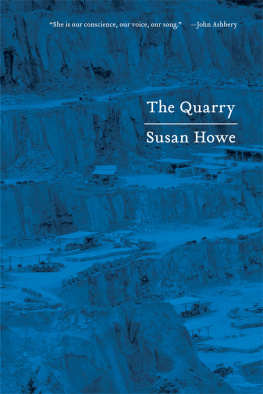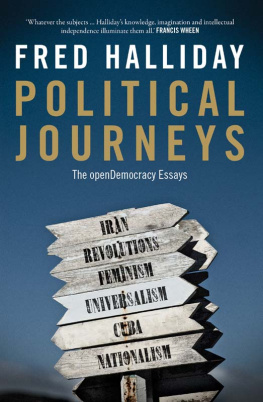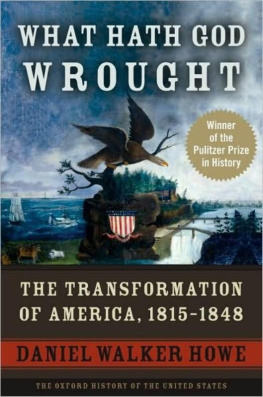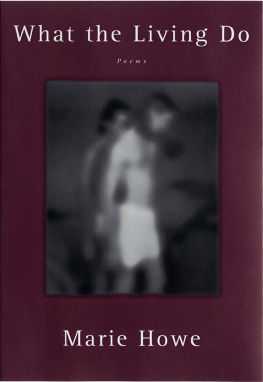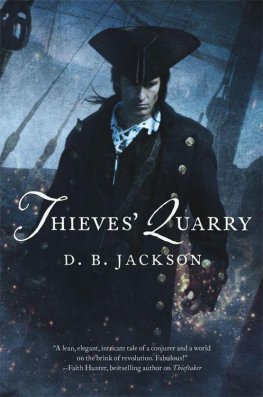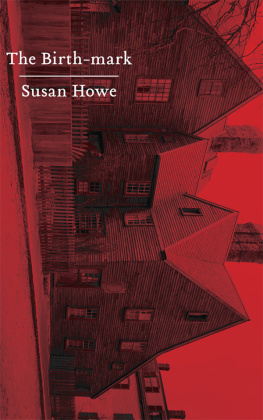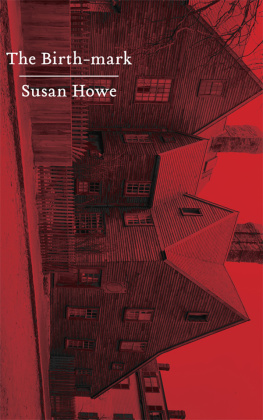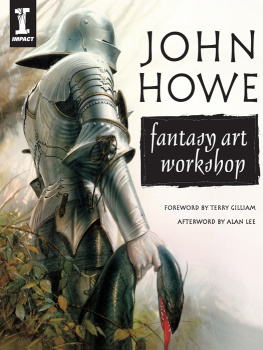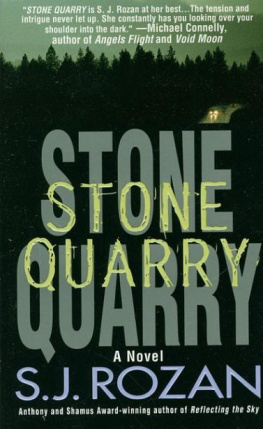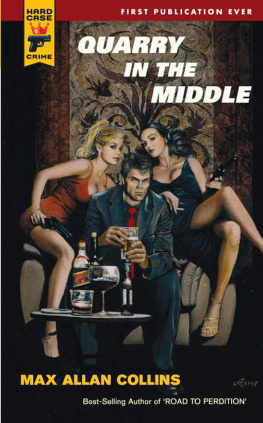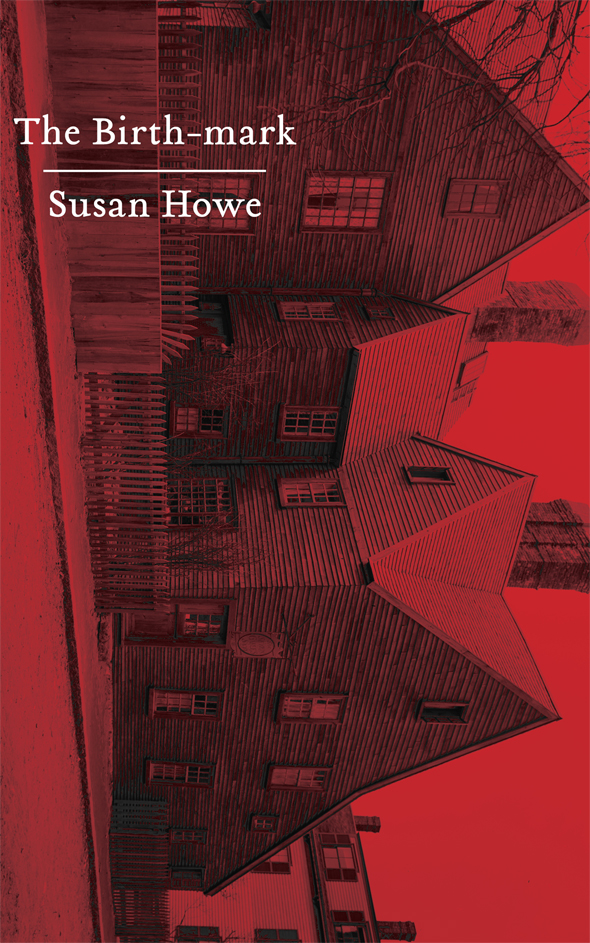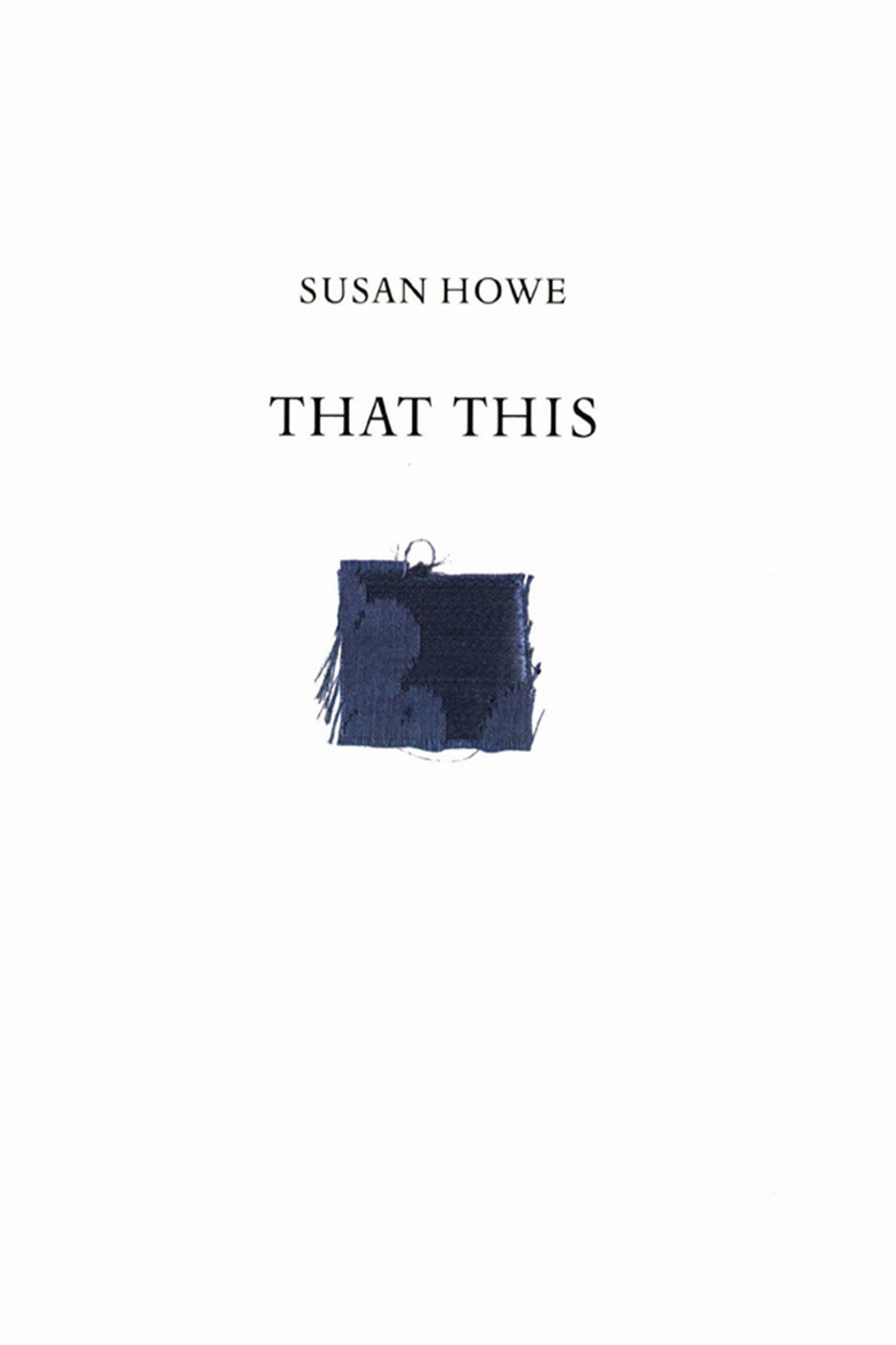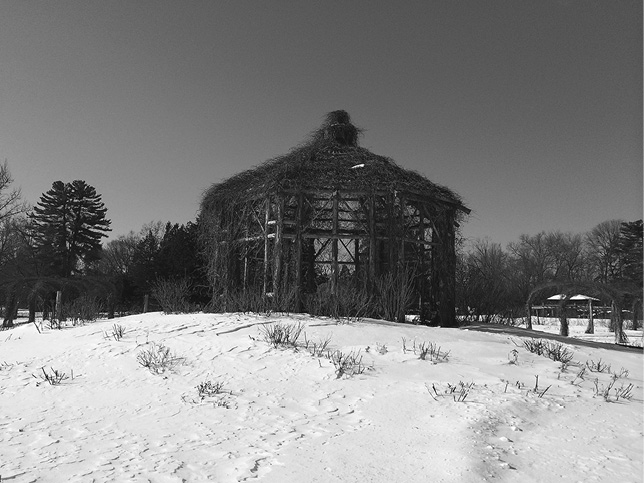The Quarry
AVAILABLE FROM NEW DIRECTIONS
BY SUSAN HOWE
The Birth-mark
The Europe of Trusts
Frame Structures: Early Poems 19741979
The Midnight
My Emily Dickinson
The Nonconformists Memorial
Pierce-Arrow
Souls of the Labadie Tract
The Spontaneous Particulars
That This
The Quarry
Susan Howe titles from New Directions now available as eBooks:
Monomania has its rewards an incantatory power that shines through. Howe's images, being historical as well as biographical, have the eerie shading of ghosts half-believed in, giving a surreal, dreamlike atmosphere reminiscent of Borges at his sharpest.
Kirkus Reviews
Copyright 1974, 1987, 1990, 1995, 1996, 1999, 2007, 2010, 2015 by Susan Howe
All rights reserved. Except for brief passages quoted in a newspaper, magazine, radio, television, or website review, no part of this book may be reproduced in any form or by any means, electronic or mechanical, including photocopying and recording, or by any information storage and retrieval system, without permission in writing from the Publisher.
The Irish Cliffs of Moher, To an Old Philosopher in Rome, Vacancy in the Park, The Hermitage at the Center, Certain Phenomena of Sound, Le Monocle de Mon Oncle, An Old Man Asleep, One of the Inhabitants of the West, and The Paltry Nude Starts on a Spring Voyage from The Collected Poems of Wallace Stevens by Wallace Stevens, copyright 1954 by Wallace Stevens and copyright renewed 1982 by Holly Stevens; The Course of a Particular from Opus Posthumous: Poems, Plays, Prose by Wallace Stevens, copyright 1989 by Holly Stevens. Copyright 1957 by Elsie Stevens and Holly Stevens, copyright renewed 1985 by Holly Stevens; Letters 449: To Harvey Breit (August 8, 1942), 641: To Thomas McGreevy (April 20, 1948), 690: To Jose Rodriguez Feo (April 22, 1949), and 842: To Barbara Church (September 29, 1952) from The Letters of Wallace Stevens by Holly Stevens, copyright 1966 by Holly Stevens: all used by permission of Alfred A. Knopf, an imprint of the Knopf Doubleday Publishing Group, a division of Penguin Random House LLC. All rights reserved.
The ms. fragment by Jonathan Edwards on page 47 is from the Jonathan Edwards Collection, part of the General Collection, Beinecke Rare Book and Manuscript Library, Yale University. The C. S. Peirce images in Arisbe are all from b MS Am 1632, Houghton Library, Harvard University. We thank the Beinecke and Houghton Libraries for their generosity and assistance.
The quotations from Robert Lax on pages 21213 and Ian Hamilton Finlay on pages 21718 are from letters to the author.
The Ad Reinhardt image on page 222 is The Museum of Modern Art/Licensed by SCALA/Art Resource, NY and 2015 Estate of Ad Reinhardt/Artists Rights Society (ARS), New York.
Ian Hamilton Finlays Fishermans Cross on page 218 is used by courtesy of the Estate of Ian Hamilton Finlay. The image is courtesy of the David Nolan Gallery, New York.
First published as New Directions Paperbook 1321 in 2015
Manufactured in the United States of America
eISBN 978-0-8112-2454-3
New Directions Books are published for James Laughlin
by New Directions Publishing Corporation
80 Eighth Avenue, New York 10011
Contents
There Are Not Leaves Enough to Crown
to Cover to Crown to Cover
Vagrancy in the Park
I.
Roaming
March... Someone has walked across the snow,
Someone looking for he knows not what.
Singeth spells. The poetry of Wallace Stevens makes me happy. This is the simple truth. Pleasure springs from the sense of fluid sound patterns phonetic utterance excites in us. Beauty, harmony, and order are represented by the arrangement, and repetition, of particular words on paper. No matter how many theoretical and critical interpretations there are, in the end each new clarity of discipline and delight contains inexplicable intricacies of form and measure. The last poems Wallace Stevens gathered together under a general title The Rock are moving, lyric meditations on the civil and particular. As if from some unfathomable source, knowledge derived from sense perception fails, and the unreality of what seems most real floods over us. As a North American poet writing in the early twenty-first century, I owe him an incalculable debt, for ways in which, through word frequencies and zero zones, his writing locates, rescues, and delivers what is various and vagrant in the near at hand. As Emily Dickinson put it: The Zeroestaught usPhosphorous / We learned to like the Fire.
Nothing that is not there and the nothing that is.
Stevens wrote The Course of a Particular when he was seventy-three. It was published in the Hudson Review (Spring 1951) along with Final Soliloquy of the Interior Paramour, but omitted by accident (according to the poet) from his 1954 Collected Poems. The Snow Man, written almost exactly thirty years earlier, is eerily similar. (Both fifteen line poems progress in tercets from one, to no one.) Perhaps, sounding its spectral refraction, he subtracted his second cold pastoral accidentally on purpose.
Today the leaves cry, hanging on branches swept by wind,
Yet the nothingness of winter becomes a little less.
It is still full of icy shades and shapen snow.
The leaves cry... One holds off and merely hears the cry.
It is a busy cry, concerning someone else.
And though one says that one is part of everything,
There is a conflict, there is a resistance involved;
And being part is an exertion that declines:
One feels the life of that which gives life as it is.
The leaves cry. It is not a cry of divine attention,
Nor the smoke-drift of puffed-out heroes, nor human cry.
It is the cry of leaves that do not transcend themselves,
In the absence of fantasia, without meaning more
Than they are in the final finding of the ear, in the thing
Itself, until, at last, the cry concerns no one at all.
Most critics read the season as autumn. For me, its lyric austerity defines late February weather in Guilford, Connecticut. Often on afternoon winter walks out on the quarry during this coldest month, there is hardly any foliage to cry in the raw air. Some brittle oak leaves still cling to their branches like tattered camouflage while tiny salt hay spindles scud across withered grass and frost-worked asphalt. Smoke-drift from indoor woodstoves is another vagrant variant. So is the coldness of green. The idea that green can be cold comes to me from Thoreau, who notes pine-green coldness in winter woods and the way light straggles. For Stevens, Today the leaves cry, hanging on branches swept by wind, / Yet the nothingness of winter becomes a little less. / It is still full of icy shades and

